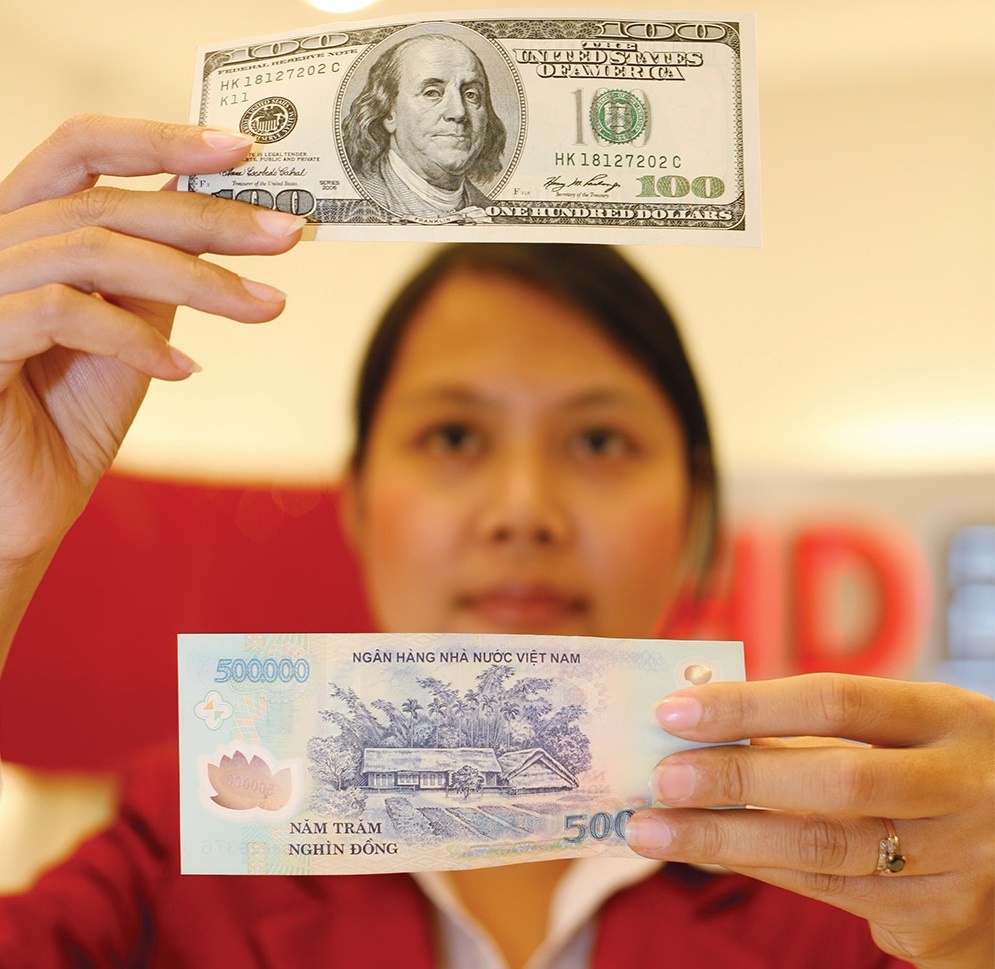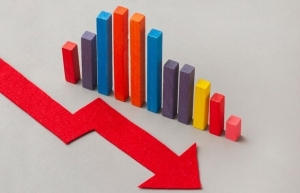USD rate pressures domestic landscape
 |
| Interbank exchange rates have been volatile in recent times |
A fortnight ago, the US Federal Reserve signalled a cautious evaluation of future inflation and economic data, stating that they would only cut interest rates when confident that inflation was under control. Economic data in the US continues to show positive results, with the manufacturing Purchasing Managers’ Index at 51.5 points in February, an increase of 0.8 points from the previous month and contrary to the forecast of a decrease to 50.5 points.
Conversely, the services index slightly decreased to 51.3 points this month from 52.5 points in January, lower than the predicted 52.4 points. The USD, measured through the US Dollar Index, decreased by 0.2 per cent after a strong increase in the previous week.
In the domestic market, interbank exchange rates were highly volatile across all markets, especially the free market. At the end of the first week after the Lunar New Year break on February 23, the closing exchange rate was 24,630 VND/USD, up 0.8 per cent from the previous week and 1.5 per cent higher than the end of 2023.
Similarly, Vietcombank’s quoted exchange rate closed around 24,405-24,775 VND/USD, up 1.5 per cent compared to the end of 2023.
“In the final months of last year, the market had somewhat overly anticipated the possibility of an early interest rate cut by the Fed,” said a senior executive from BIDV. “Along with some positive information about the US economic growth and statements from the Fed chairman during the January meeting, signalling no interest rate cut in March, market expectations regarding the Fed’s policy have been adjusted to a more reasonable level, leading to the resurgence of the USD.”
Domestically, the supply and demand for foreign exchange have developed less favourably than expected. Although still achieving a surplus overall of around $1 billion, this is not an excessively abundant level compared to the pre-Lunar New Year period in previous years, usually with a surplus of $3-4 billion.
Furthermore, the VND-USD interest rate differential continues to be negative with a 1-week average around negative 5 per cent per annum, becoming a factor that makes market sentiment more cautious and leading to a demand for foreign exchange to hedge risks.
Conversely, fundamental components of foreign exchange, such as trade surplus, foreign direct investment (FDI) disbursement, and remittances remain relatively abundant, supporting the narrowing of the exchange rate’s upward momentum towards the end of the month.
Analysts assess that the prolonged USD-VND interest rate differential and the Fed’s monetary policy trend will keep the demand for USD attractive in the first half of 2024, contributing to the sharp increase in the exchange rate in the post-Lunar New Year period. In February, the USD/VND exchange rate in the interbank market continued to experience fluctuations, facing increased upward pressure in the post-holiday period.
“Despite the ongoing uncertainties about inflation, such as persistently high housing inflation and a robust job market, institutional investors are still cautious about increasing their positions in USD. The cautiousness is driven by the possibility of a Fed interest rate cut in the near term, making it challenging for the USD to strengthen significantly,” the BIDV senior executive added.
In the domestic market, the exchange rate faces renewed pressure after Lunar New Year due to less favourable foreign exchange supply and demand conditions, as well as the return of the VND-USD interest rate differential to deep negative territory. Historical data shows that basic components such as trade balance and FDI disbursement during the Lunar New Year are usually not overly abundant, while the demand for forward contracts as a risk protection strategy remains relatively high due to cautious sentiment regarding international risks.
Data from the General Statistics Office reveals that in February, the total import-export turnover of goods reached $48.54 billion, decreasing by 25.8 per cent compared to the previous month and 1.8 per cent compared to the same period last year.
In the first two months of this year, the total import-export turnover of goods reached $113.96 billion, increasing by 18.6 per cent compared to the same period last year, with exports up by 19.2 per cent and imports up by 18 per cent.
 | US Fed's favored inflation gauge falls, but price pressures remain The US central bank's favored measure of inflation edged lower on an annual basis in January, government data showed Thursday, but a metric stripping out volatile food and energy prices jumped month-over-month. |
What the stars mean:
★ Poor ★ ★ Promising ★★★ Good ★★★★ Very good ★★★★★ Exceptional
Related Contents
Latest News
More News
- Miza Nghi Son green bond marks milestone for sustainable finance (January 19, 2026 | 09:51)
- Higher 2026 growth target puts pressure on credit framework (January 19, 2026 | 09:00)
- VN-Index could reach 2,040 points in 2026 (January 16, 2026 | 16:41)
- Vietnam’s corporate bond market set for a more positive 2026 (January 15, 2026 | 14:10)
- Foreign sentiment towards Vietnam turns more positive (January 15, 2026 | 11:08)
- Wealth management faces skills gap as investor confidence lags (January 13, 2026 | 10:23)
- HDBank completes $100 million international green bond scheme (January 12, 2026 | 16:28)
- Vietnam’s IPO market eyes revival in 2026 (January 09, 2026 | 17:28)
- Brokerage competition tightens as market shares narrow (January 09, 2026 | 15:19)
- Banks set for selective hiring in 2026 (January 08, 2026 | 10:56)

 Tag:
Tag:





















 Mobile Version
Mobile Version